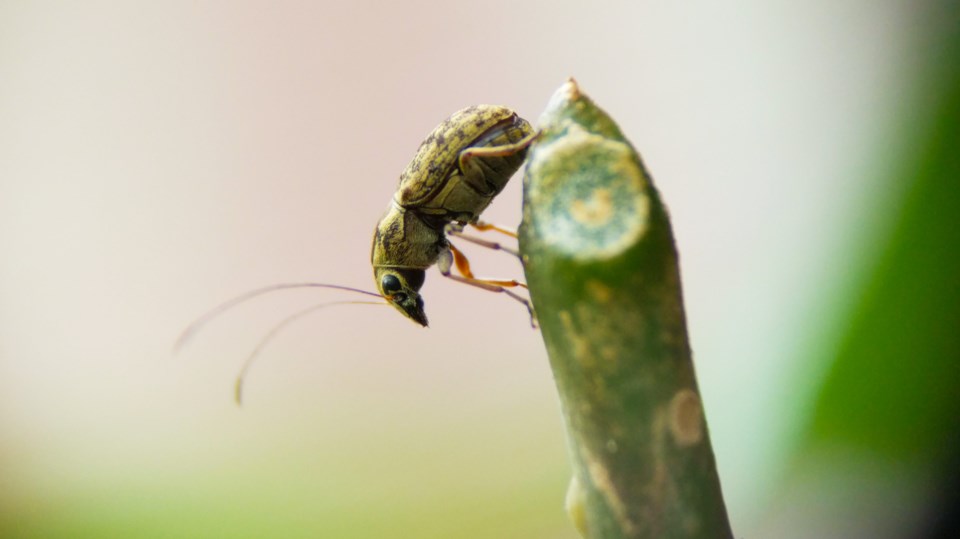At times it felt like no living thing could survive Saskatchewan’s historically cold February, however as area farmers well know, crop pests don’t go away easily.
James Tansey, Provincial Specialist, Insect/Vertebrate Pest Management with the Government of Saskatchewan, said that when it comes to insect populations that are a wide variety of factors that come into play.
“If the supercooling temperature of insects is exceeded – that is the temperature where you get spontaneous freezing – then you can get mortality. There are some that are thought to be more sensitive to those real hard cold snaps without the snow cover,” Tansey explained. “What we’ve seen is decreases in pea leaf weevil population and some lesser decreases in cabbage seedpod weevil populations. There is some thinking that these hard cold snaps without snow cover might be influencing them.
“There’s also a good possibility that the dry conditions in the past couple of years might also be influencing their populations as well. They do pupate in the soil. That can influence their movement within the soil and in and out of the soil as well.”
A dry spring may help keep certain pest populations down, but it is also disadvantageous for growers as they begin seeding.
“That factor is also thought to be contributing to reduced wheat midge populations. The dry conditions don’t favour those insects,” Tansey said. “We’ve had a couple of dry years and our current grasshopper populations are very low according to the 2018 survey.
“Populations are low across the province, but there’s an important caveat to that, which is that populations are on the rise in Alberta and Manitoba. We anticipate populations coming up.”
Tansey said that 1,200 sites were sampled across the province to examine grasshopper populations and there were some locations in the southwest and southeast that did show that grasshoppers still had a presence there.
“We did have some reports of grasshopper problems in lentils, flax and perennial hay, primarily in the southwest last year,” Tansey said. “We have 1,200 sites, but we can’t hit every field, so it’s really important for growers to get out and monitor their fields.”
While a warm spring may mean less wheat midge, flea beetles that feast on canola prefer warm and dry conditions in the spring.
“Most growers will use insecticidal flea treatment. There’s really no way around it with flea beetle populations. They’re a perennial problem. It’s just a matter of how bad is the perennial problem going to be.”
They aren’t the only threat to canola as Tansey warns that the Bertha armyworm seems to be picking up and the diamondback moth could also be a concern.
“We’re in the low part of a historical cycle and (the Bertha armyworm) typically moves on about an eight-year cycle. Numbers last year… through the provincial monitoring program, were slightly elevated compared for 2017,” Tansey said. “We will post any potential outbreaks and Bertha armyworm numbers and diamondback moth numbers just about weekly. Diamondback moth sampling will probably start in mid-April at the earliest.
“Those animals are flying in from the Southern U.S. primarily. They don’t typically overwinter here in high numbers, so it depends on whether the high-altitude winds are favourable and whether the conditions are favourable in Florida and Mexico and southern Texas for them to take flight. If the stars align we could have diamondback problems. However, numbers were very low last year.”
Tansey that the weekly pest monitoring will be posted on the Agriculture ministry website and added that the Prairie Pest Monitoring blog site was a great resource as the provincial agencies in Saskatchewan, Alberta and Manitoba all contribute, as does Agriculture Canada.
Tansey also recommended the web site Field Heroes as a good resource that promotes the natural enemies of a lot of common crop insect pests.


.png;w=120;h=80;mode=crop)

